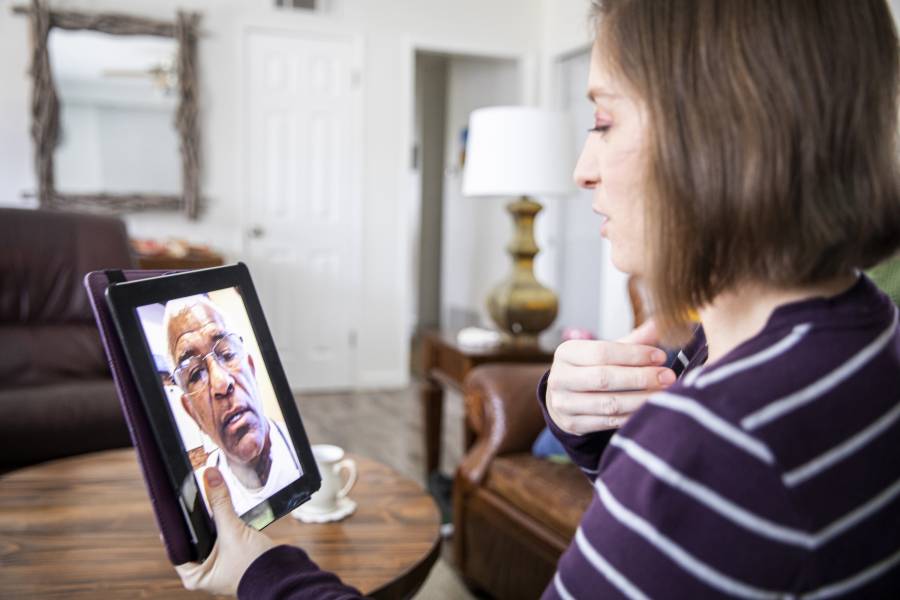A study co-authored by researchers at the Johns Hopkins Bloomberg School of Public Health found that telehealth consults among privately insured working-age patients accounted for almost 24% of outpatient consults with health care providers during the early phase of the pandemic—from March to June last year—up from less than 0.3% during the same period in 2019.
The dramatic shift occurred as many medical practices halted or curtailed in-person office hours and patients stayed away from doctor's offices out of fear of transmission during the early months of the pandemic. At the same time, insurance companies and the federal government relaxed policies around telehealth to meet demand for remote medical consults via internet video or telephone.
The study was published online in JAMA Network Open.
For their study, researchers from the Johns Hopkins Bloomberg School of Public Health and Blue Health Intelligence, an independent licensee of the Blue Cross Blue Shield Association, analyzed anonymized claims data drawn from 36.6 million private insurance plan members who were of working age and continuously enrolled during the study period. The claims data for the study were provided by Blue Health Intelligence.
A total of 15 million telehealth claims were submitted during the study period, with nearly three-quarters involving video support (74.4%) and fewer than one in ten occurring via phone (9.2%). Just over 3% were conducted either by email or chat, while 13.1% were unspecified.
Mental health consults were far more likely to take place virtually—with 46.1% taking place via telehealth. By comparison, 22.1% of medical consults were virtual. In COVID-19 "hot spot" states—those with a COVID-19 prevalence at least 1.5 times the national average—36% of all consults were telehealth versus 21.6% in areas with lower COVID-19 prevalence. The study also found that the greater the COVID-19 prevalence in a specific ZIP code, the higher the use of telehealth.
"Telehealth has been around for a long time, but the recent increase has been enormous," says the study's lead author, Jonathan Weiner, co-director of the Center for Population Health Information Technology and professor in the Department of Health Policy and Management at the Bloomberg School. "These findings will not only help doctors and other clinicians plan for the future, they will also guide policymakers and technology companies, especially as we learn more about the challenges of accessing telehealth among older patients, the uninsured, and low-income patients."
About a quarter of consults, 24.2%, in urban areas were via telehealth. This compared to only 14.2% of visits for members who lived in more rural settings. Age and number of chronic diseases were associated with more frequent telehealth consults, with individuals age 18 to 49 and those with more than two chronic conditions using telehealth the most.
The study also found that overall total medical care costs, including hospitalizations, dropped 15%, from $358 to $306 per person per month, from 2019 to 2020. Persons with at least one COVID-19-related consult in 2020 had more than three times the medical costs compared to those with no COVID-19-related services—$1,701 per member per month versus $544, a difference of $1,157.
Overall, the researchers found that in-person, outpatient visits decreased by 37%, from an average of 1.63 visits per enrollee during the three-month 2019 study period to an average of 1.02 visits per enrollee in 2020. However, since telehealth visits filled much of the gap, the total combined in-person and virtual encounter rate dropped only 18% between 2019 and 2020.
For persons with at least one COVID-19-related insurance claim, including screening and care, the average number of in-person and telehealth consults were about 30% higher than the average number of claims for persons with no COVID-19-related visit. One-quarter of COVID-19-related consults were via telehealth versus 23.5% for non-COVID-19-related consults.
"Even though some of our findings are unique to the COVID-19 era, we need to consider what telehealth will look like beyond the pandemic," says Weiner. "We will need to continue to assess and modify telehealth strategies to maximize value during this digital age, particularly given the challenges of the digital divide across social and geographic lines."
Posted in Health
Tagged health policy








